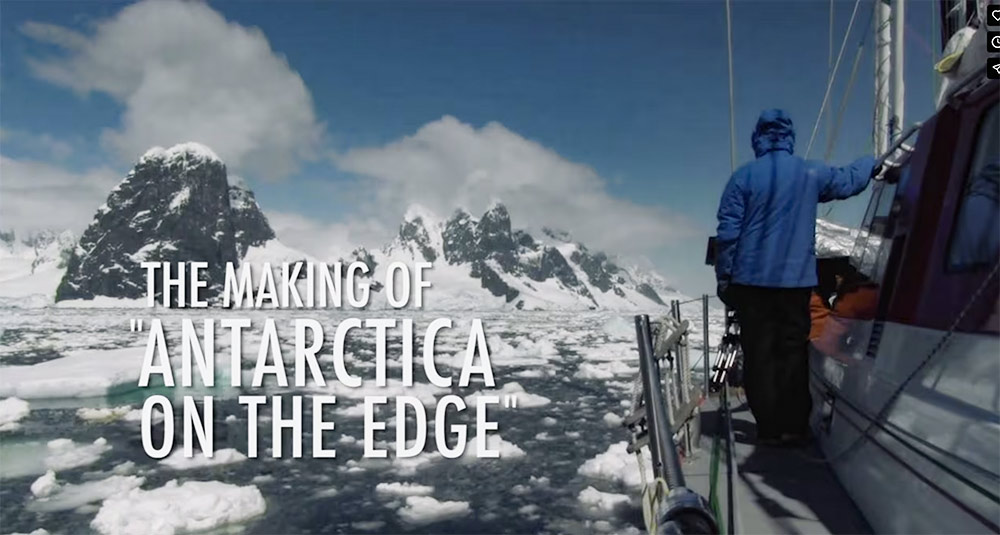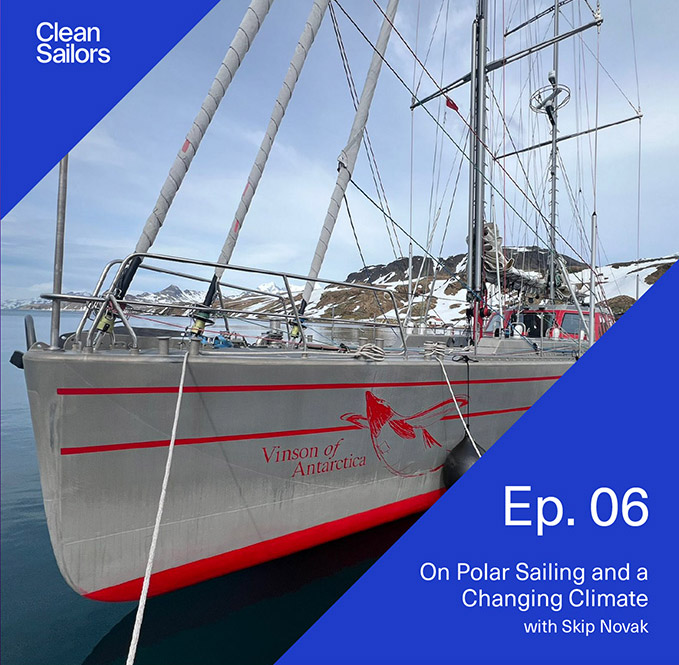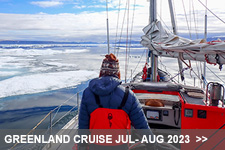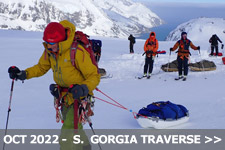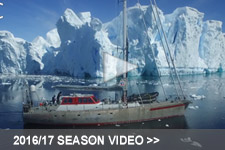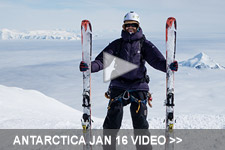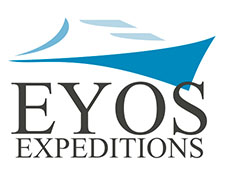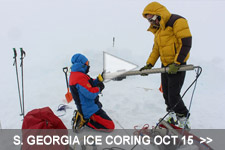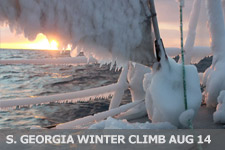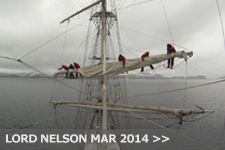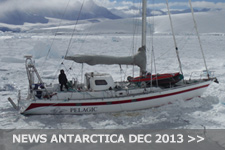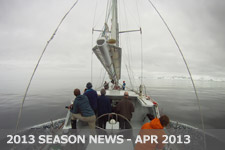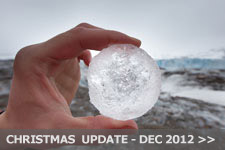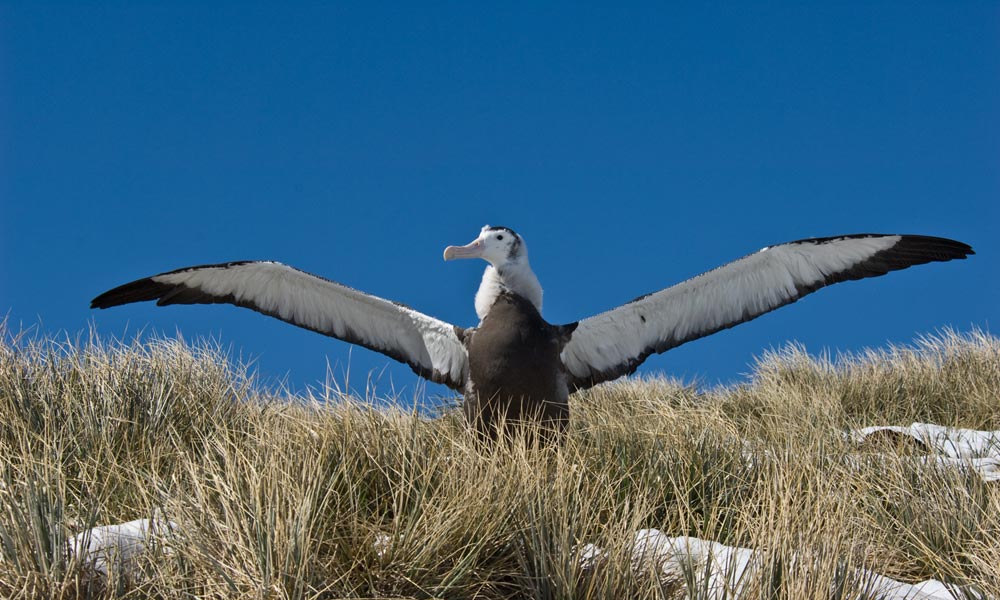27.11.2013 - Report on The Shackleton Traverse From Pelagic Australis October 2013
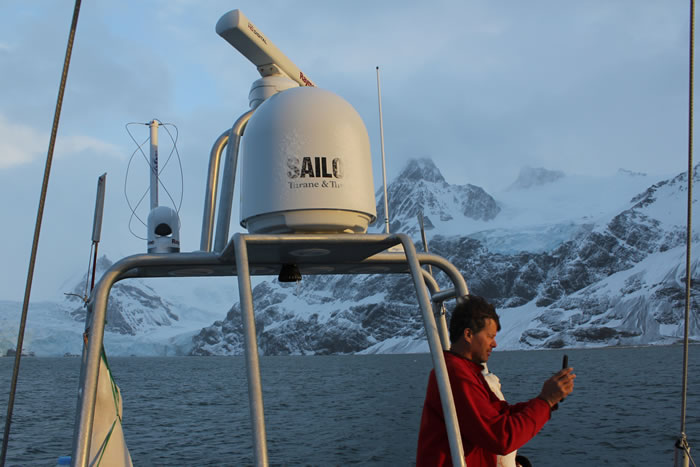
South Georgia landfall courtesy of Raymarine and Sailor
After having completed four Shackleton Traverses from King Haakon Bay to Stromness since 2006, looking back after the current failure I have to admit in being perversely satisfied at the result. The island certainly lived up to its reputation for unpredictable weather conditions with big dumps of precipitation and savage winds. It is not a given that any party will successfully complete the route, and of course if it was, we probably wouldn’t have attempted it in the first place. Such is the attraction of uncertainty which must be a feature of a true adventure.
Our eclectic traverse team of sailing friends Cam Lewis, Gretchen Scott, Larry Rosenfeld and Amy Drinker (USA) were joined by sailor/alpinist Giorgio Bertone from Genoa ; the party being led by myself and mountaineers Julian Attwood and Ed Douglas (UK).

A cracking downwind sail from Stanley
A cracking downwind sail from Stanley, twin headsails ‘poled out’ all the way brought us directly into King Haakon Bay on October 18th. We anchored close aboard the eastern side of the Vincent Islands, an illusionary shelter in anything except relatively settled conditions which didn’t last long. The strong westerly flow we had so well rode in on from Stanley persisted for the next four days making the traverse start unattainable. Horizontal driven rain, sleet, then snow understandably dampened enthusiasms. Starting out wet with no visibility is not an option and in spite of having GPS positions from previous traverses, a necessity is to have reasonable conditions and visibility at least to get safely established on the expanse of the Murray Glacier - hopefully in minus temperatures to avoid a soaking.
These conditions highlight the dilemma cruise ships have when attempting the traverse with their strict schedules. The pressure from clients to start in similar conditions is a tricky situation to manage and it takes a strong willed guide, at the risk of disappointing his clients (and the company advertising this add on option) to say ‘no go.’
We remember what can happen when two years ago a group from a ship set out in what must have been similar conditions. Of course ship parties have a second chance if they fail to deploy from King Haakon in that they can try again from Possession when the ship motors around, but this requires reconciliation by the on board Expedition Leader of the needs of the vast majority of clients who are cruise only and the requirements of the minority wishing to attempt the traverse.
Eventually on October 20th we mustered the will power in spite of the weather to cache the skis, pulks, camping gear and provisions and fuel for at least five nights out at the snow line near the ice of the Shackleton Gap.

Skip Ed and Julian at the cache
We appreciated the load carrying from the Pelagic Australis crew of skipper Magnus Day, Laura Hampton (both UK) and Thomas Geipel (Germany), joined by Mike Spencer from America. The following day was scrubbed with again strong winds, rain and then snow.
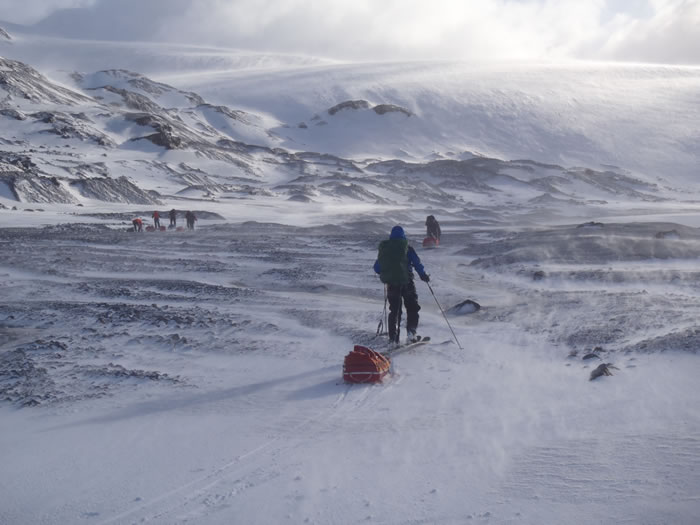
Making for the Shackleton Gap in cold and windy conditions
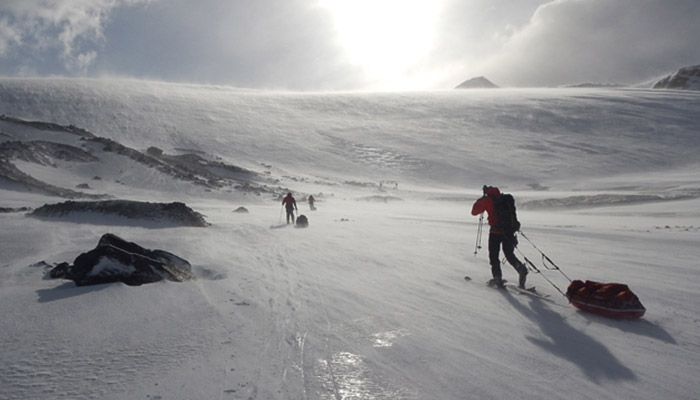
Early on October 22nd, we made a break for it in windy but clear conditions during a frosty and brief southerly shift that brought new snow down to the waterline. All went well on day 1 ascending to the level of the Murray, needing hartscheisen (ski crampons) on icy, wind scoured lower slopes. We continued on across the Murray and half way to the Trident, then thick weather arrived with a westerly shift bringing more snow. In spite of having a GPS position for the Trident Camp, the vague appearance of a rock buttress was a false target and we wound up too far right on the edge of the wrong windscoop, so moved around left and made camp just below the middle col of the ridge (it is recognized that Shackleton, Worsley and Crean took the left hand, higher col for their passage). Lesson learned here is to get out the specs and read your GPS no matter what!
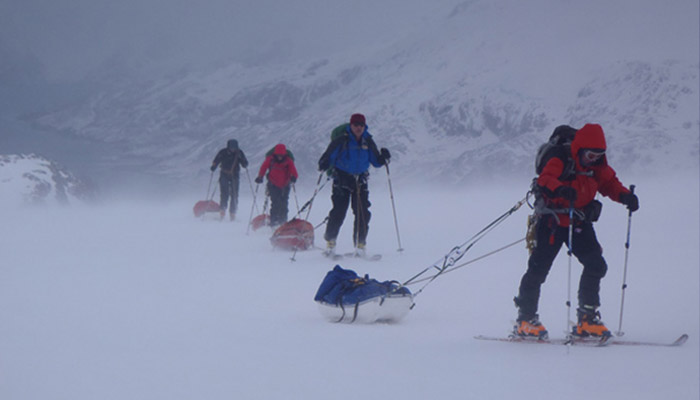
Skinning up to the level of the Murray Glacier
So far so good, but that night it continued blow strong from the west bringing at least 300mm of snow and it was clear this would make the downside of the Trident a wind slab avalanche risk. To safely descend the Trident with a mixed group, requires a long process of lowering off the pulks, 180 meters at a time (3 x 60m ropes tied together anchored by a snow stake), digging out ledges, bringing everyone down the rope on a prussic because of crevasses on the slope, and then repeating this game three times to reach the flat on the Crean Glacier. Given the weather conditions, poor or nil visibility and the time this would take on a potential avalanche slope this was deemed unacceptable, so we made the decision to descend back onto the mid Murray and call in Pelagic Australis for an eventual pick up in Possession Bay as the weather forecast that night was more of the same for the next 48 hours at least.
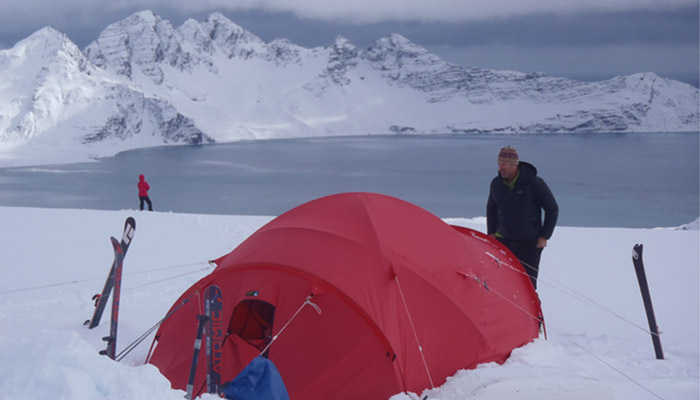
Camp above Assistance Bay East
During a camp above the east arm of Assistance Bay we experienced a hard night of very strong south westerly winds accelerating over us katabatically approaching tent busting conditions and most of us had little sleep. Easing slightly by morning, the weather kept us tent bound the following day and during the evening the wind slacked off for a relatively quiet night on the 24th.
By this time Pelagic Australis had motored around the northwest tip of the island in thick weather and was at anchor in Cook Bay near the whaling station of Prince Olaf. After a visual recce of a possible descent route by the sailing crew, albeit in less than clear visibility, we left the campsite at 1000, having seen another party from the French yacht Les Sourire climbing up to an extension of the Trident well north of the classic Shackleton descent into the Crean. They had started from the western arm of Assistance Bay and this was their second attempt at the traverse having had the same windy weather that we had sailed in on. Maybe they knew something we didn’t? They disappeared in the mist as we descended a snow ramp down to the eastern arm of Assistance Bay to the waiting dinghy; which for future reference is not a desired exit (although a quick one from the Trident) as it was threatened in the final part from ice cliffs above, only revealed in the mist well down the slope. Better to have gone farther west around Glacier Point and down to the western arm of Assistance Bay from the classic Shackleton Gap. This is an important point as the eastern arm appears doable from the map, but one enticing ramp on the right leads to an impassable ice cliff and our ramp on the left was indeed threatened from seracs.
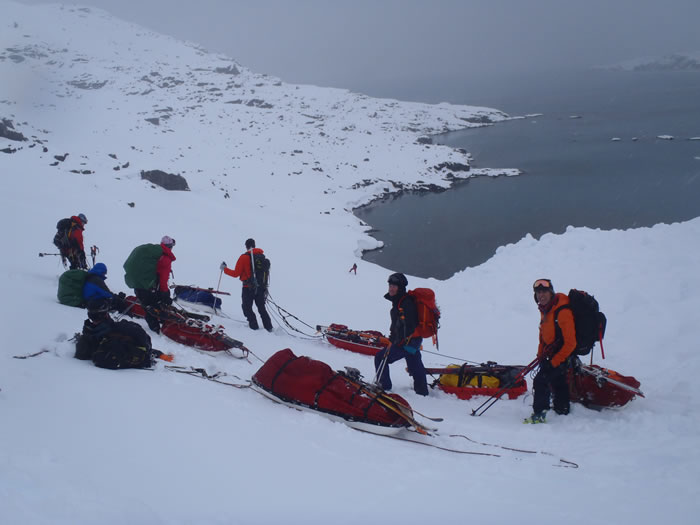
Down to Assistance Bay East
Happily back on board, we spent a windy night in Cook Bay, and then scuttled off to Fortuna to attempt a day outing to ski up the Fortuna from Anchorage Bay, going up and over the Breakwind Gap and on around to Stromness. After a tour of the Kings at Fortuna on October 26th with Le Sourire now also in the anchorage, we watched their skiers descend into Anchorage Bay, having spent a windy few nights on the Crean. Next day we skied back up part of their route to gain the Fortuna with fine views of Mt Stanley and the Great Nunatak that was the steering beacon for Shackleton, Worsely and Crean when they crossed from the Trident. We skied up to and cramponed over the Breakwind Gap in zero vis, which later cleared with less than safe skiable snow conditions further down the gully. Snow patches on the grassy lower slopes happily linked together which brought us right down on our skis to the beach at Whistle Cove.
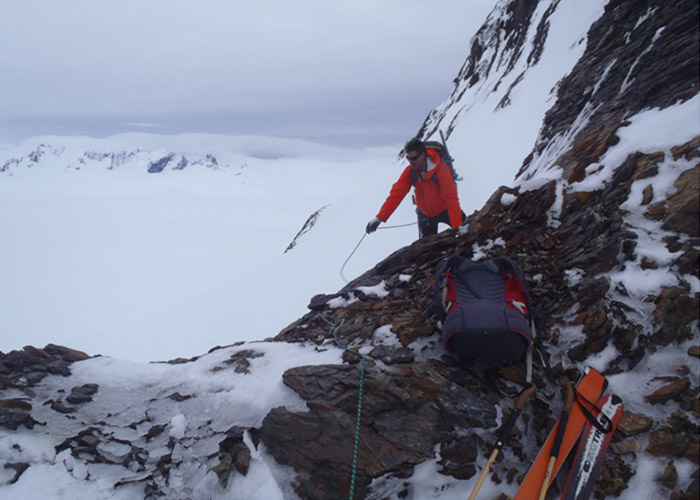
Up and over Breakwind Ridge
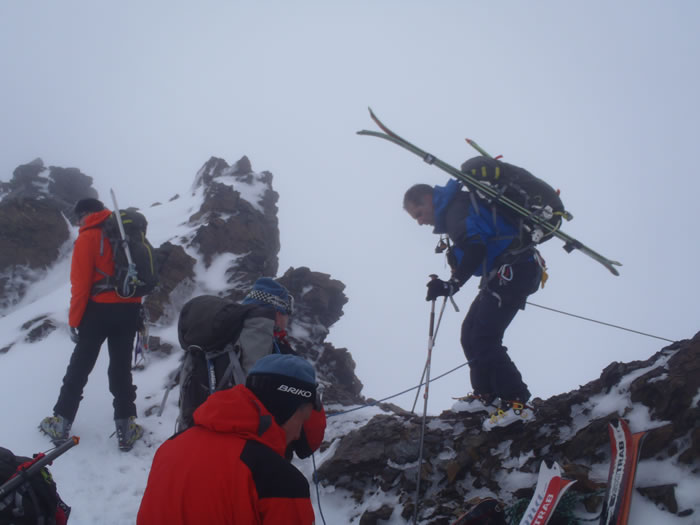
Larry on Breakwind Gap
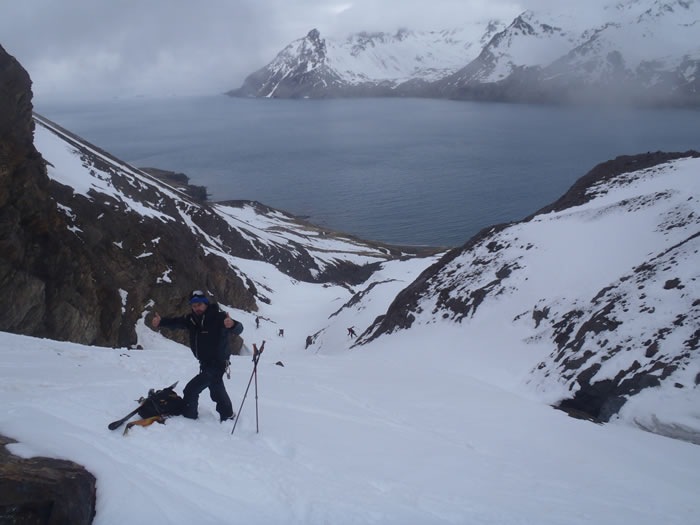
Breakwind Ridge above Fortuna Bay
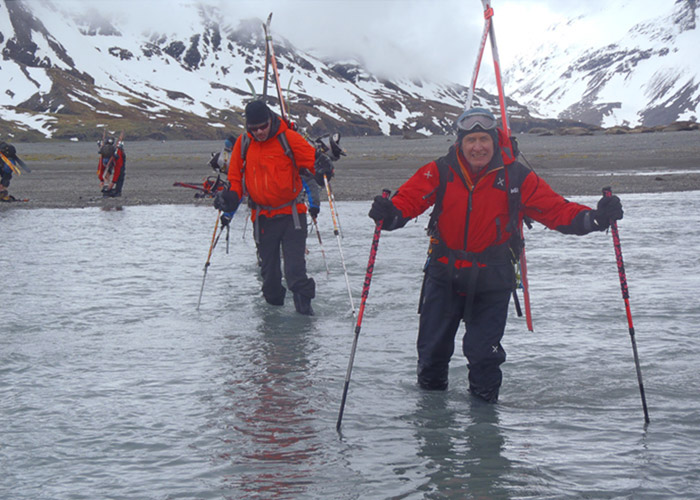
Giorgio and Cam crossing the Konig Glacier outfall river
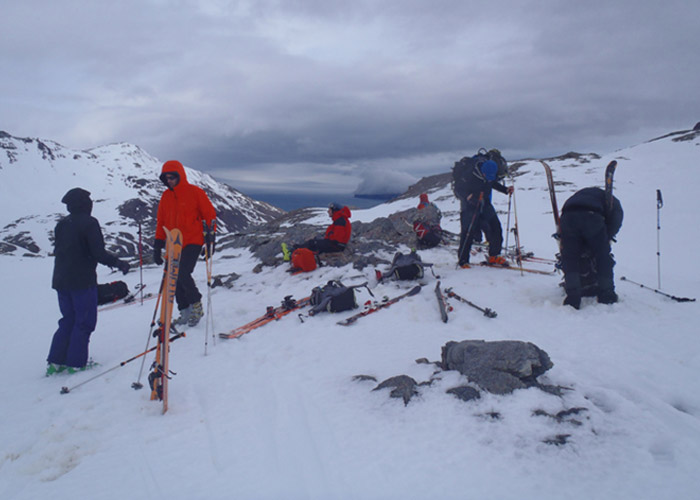
The col above Crean Lake looking down into Stromness Bay
I missed not having the time to camp on the shingle beach at Fortuna Bay, able to revel in a bit of greenery, as we normally do after days up high. Instead, the boat came around in quick time, took our climbing gear off and we went light with rubber boots, carrying skis and ski boots across the outwash plain of the Konig Glacier, skinned up to the col above Crean Lak and skied down to the braided river that empties into Stromness Bay. Shackleton Route – 3/4’s done!
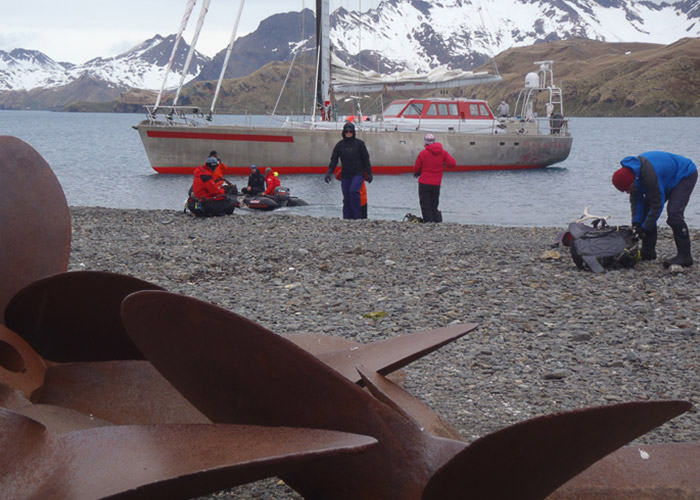
Base Camp Pelagic Australis ready to pick up
Having completed the Shackleton Traverse (more or less), the main focus of the voyage, we could now relax and enjoy what the island has to offer. I am a firm believer that this ‘icing on the cake’ tastes much better after indulging in an objective with ‘an edge,’ be it success or failure.
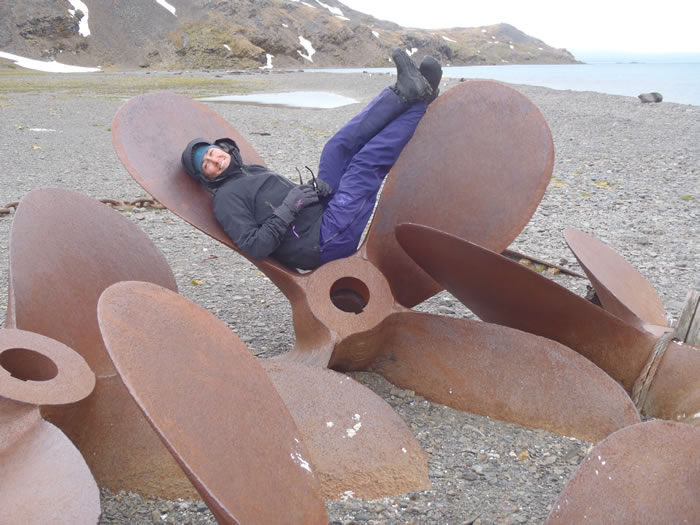
Garage Calendar shot of Gretchen
After our pick up by Base Camp Pelagic Australis, we kicked back while Magnus and crew piloted us around to the flesh pots of Grytviken and King Edward Point, the administrative base for the island. This bay is a haven for small craft with a substantial jetty at the whaling station and plenty of free roaming space on shore with much to see. Three days is my minimum requirement, as we need a day to dry out and sort out our equipment (sunny, windless day needed which always seems to occur, when we in fact should still be in the mountains!), drink cups of tea at the museum followed by cups of tea at King Edward Point. A ‘soft touch’ day’s skiing and climbing on Mt Hodges and Mt Petrel provides great views over Cumberland Bay. Then there’s Shackleton’s Grave (now with Frank Wild’s ashes hard alongside), his monument and the fish biology lab run by the British Antarctic Survey. Our custom guided tour was pre-empted by two bull elephant seals battling for the harem in front of the lab’s porch which brought most of the base personnel out to watch the bloody spectacle.
With good weather established our wildlife tour began at Andrews Bay, home to hundreds of thousands of King penguins with a beach head guarded by harem after harem of elephant seals with weaned pups, now being serviced in turn by the dominant bulls. Small herds of reindeer marched nonchalantly through the penguin rookery – the last we will see of them as they are due to be eradicated end of this season, in conjunction with the rat eradication programme ongoing.
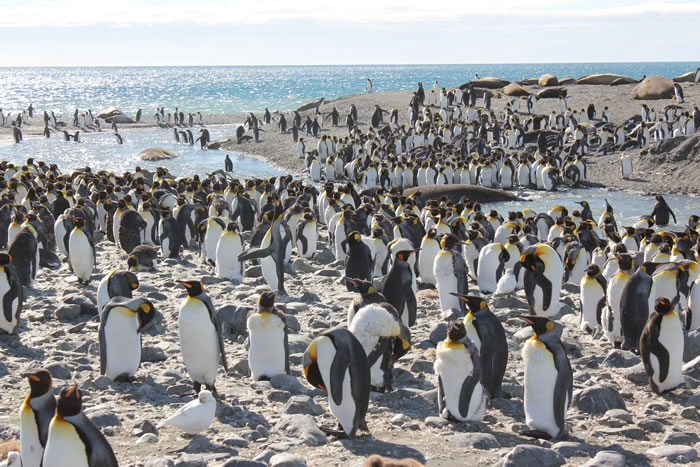
King Penguins at St Andrews Bay
An evening BBQ on board at Cobblers Cove, one of the most scenic small boat anchorages on the island was enjoyed after a brisk trek up and over to the Macaroni Penguin rookery at aptly named Rookery Bay. Dozens of Macaronis were in residence, but the big haul out was yet to come.
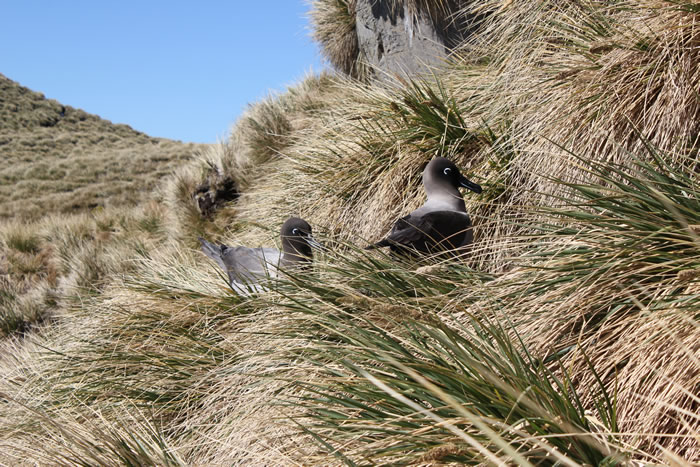
Pair of light mantled albatross
Pairs of courting Light Mantled albatross did figure of eight loops above us over the cliff face frequently returning to their precariously positioned nest sites which we struggled to get close to. A spectacular day.
After watching the Wandering Albatross chicks at Prion Island exercising their wings after nine months on the nest, we spent out last night at Rosita Harbour in the Bay of Isles. A window of opportunity for the return voyage fortuitously appeared – a bit early, but we had to take it to mitigate the pain of battling the westerlies ‘blowing out of the pub door’ as they say in Stanley. Five days later, having taken the good with the bad, we arrived on Wednesday afternoon on November 6th. Now, it was all ‘beer and skittles’ until the weekly flight out to Santiago.
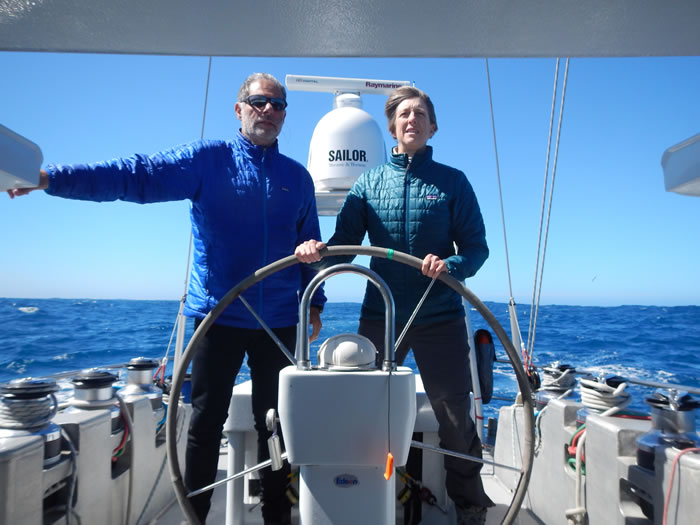
Larry and Amy

Cam and Gretchen

Skipper Magnus on butchery
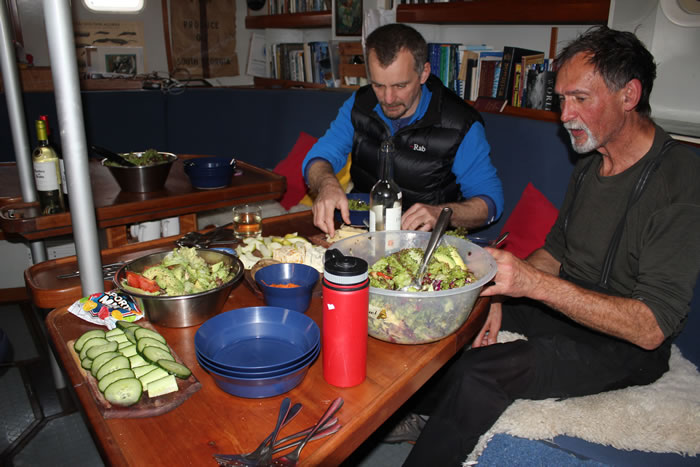
Ed and Mike on Dinner

